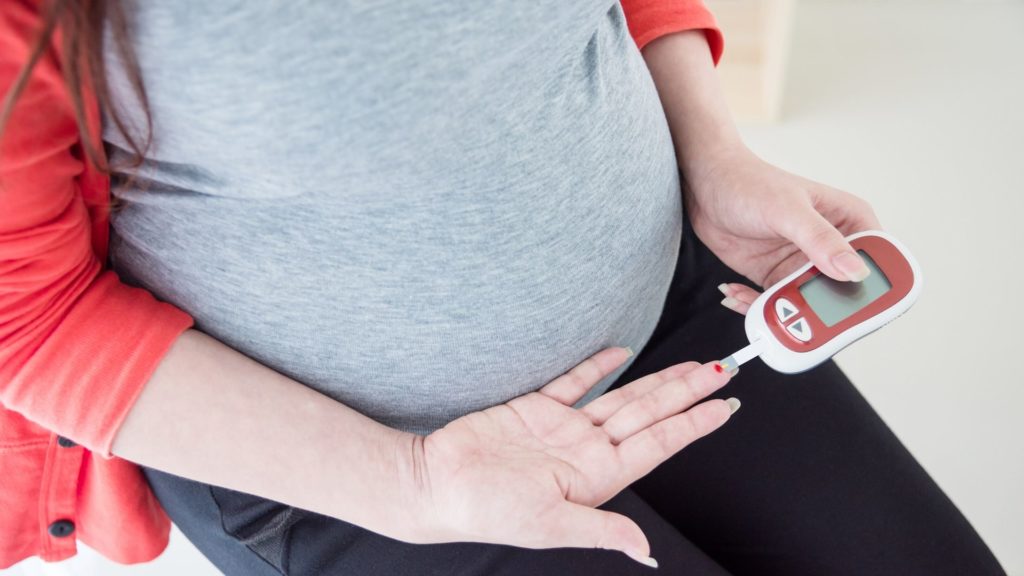What Is diabetes?
Approximately 16 million Americans have diabetes. Half of them are not aware they have diabetes. With the proper treatment and lifestyle changes, many of the possible complications (such as blindness, amputations, heart disease, kidney failure, and premature death) can be prevented or delayed.
Diabetes is a disorder of metabolism–the way our bodies use digested food for growth and energy. Most of the food we eat is broken down by digestive juices into a simple sugar called glucose. Glucose is the main source of fuel for the body.
After digestion, the glucose passes into our bloodstream where it is available for body cells to use for growth and energy. For the glucose to get into the cells, insulin must be present. Insulin is a hormone produced by the pancreas, a large gland behind the stomach.
When we eat, the pancreas is supposed to automatically produce the right amount of insulin to move the glucose from our blood into our cells. In people with diabetes, however, the pancreas either produces little or no insulin, or the body cells do not respond to the insulin that is produced. As a result, glucose builds up in the blood, overflows into the urine, and passes out of the body. Thus, the body loses its main source of fuel even though the blood contains large amounts of glucose.
What are the signs and symptoms of diabetes?
The signs of diabetes are:
- being very thirsty
- urinating often
- feeling very hungry or tired
- losing weight without trying
- having sores that are slow to heal
- having dry, itchy skin
- losing feeling in the feet or having tingling in the feet
- having blurry eyesight
You may have had one or more of these signs before you find out you have diabetes.
What are the different types of diabetes?
The three main types of diabetes are:
- Insulin-dependent diabetes mellitus or Type 1 diabetes
- Noninsulin-dependent diabetes mellitus or Type 2 diabetes
- Gestational diabetes
Type 1 Diabetes
Type 1 diabetes is considered an autoimmune disease. An autoimmune disease results when the body’s system for fighting infection (the immune system) turns against a part of the body. In diabetes, the immune system attacks the insulin-producing beta cells in the pancreas and destroys them. The pancreas then produces little or no insulin, thereby preventing cells from taking up sugar from blood.
Someone with Type 1 needs daily injections of insulin to live. At present, scientists do not know exactly what causes the body’s immune system to attack the beta cells, but they believe that both genetic factors and viruses are involved. IDDM accounts for about 5% to 10% of diagnosed diabetes in the United States.
Type 1 develops most often in children and young adults, but the disorder can appear at any age. Symptoms of Type 1 usually develop over a short period, although beta cell destruction can begin months, even years, earlier.
Symptoms include increased thirst and urination, constant hunger, weight loss, blurred vision, and extreme tiredness. If not diagnosed and treated with insulin, a person can lapse into a life-threatening coma.
Type 2 Diabetes
The most common form of diabetes is Type 2 diabetes. About 90 to 95% of people with diabetes have Type 2. This form of diabetes usually develops in adults over the age of 40 and is most common among adults over age 55. About 80% of people with Type 2 are overweight.
In Type 2, the pancreas usually produces insulin, but for some reason, the body cannot use the insulin effectively. The end result is the same as for Type 1: an unhealthy buildup of glucose in the blood and an inability of the body to make efficient use of its main source of fuel.
The symptoms of Type 2 develop gradually and are not as noticeable as in Type 1. Symptoms include feeling tired or ill, frequent urination (especially at night), unusual thirst, weight loss, blurred vision, frequent infections, and slow healing of sores.
Gestational Diabetes
Gestational diabetes develops or is discovered during pregnancy. This type usually disappears when the pregnancy is over, but women who have had gestational diabetes have a greater risk of developing Type 2 later in their lives.
What is hypoglycemia?
Hypoglycemia, or low blood sugar, occurs when blood levels of glucose, the body’s main fuel, drop too low to fuel the body’s activity. Carbohydrates (sugars and starches) are the body’s main dietary sources of glucose. During digestion, the glucose is absorbed into the blood stream (hence the term “blood sugar”), which carries it to every cell in the body. Unused glucose is stored in the liver as glycogen.
In the case of hypoglycemia, the mechanism for converting stored glucose (glycogen) back into usable glucose energy (glucose) by the body is faulty. The process normally involves the liver and other organs as well as various hormones. Hypoglycemia is extremely rare.
Can pregnancy cause diabetes?
A temporary type of diabetes known as gestational diabetes develops in some pregnant women; the condition disappears when the pregnancy is over. A history of gestational diabetes, however, is a risk factor for eventual development of Type 2. Gestational diabetes occurs in 2 to 5% of pregnancies and at higher rates among African Americans, Hispanics/Latino Americans, and American Indians (rates in American Indians range from 1 to 14%).
Thomas E. Nolan, MD, MBA
Dr. Nolan is Professor in the Departments of Obstetrics and Gynecology and Medicine at Louisiana State University Health Science Center, and Hospital Center Director of Women’s and Newborn Services at the Medical Center of Louisiana in New Orleans.

